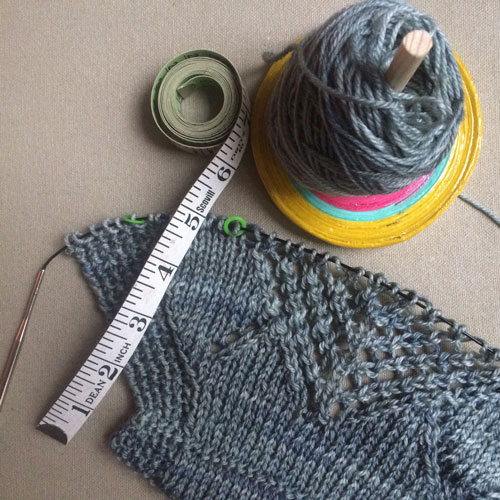Meet the Yarn: For Better or Worsted
Jill Wolcott
passion.fashion.knits
For Better or Worsted is so yummy to knit! Again, we find that 10% cashmere, blended with 80% superwash Merino and 10% nylon. This yarn is cushy and so soft a couple times I had to actually look at my hand to make sure I had the yarn tensioned in my fingers!
As I look at the yarns on my yarn shelf, there isn’t much in the way of worsted yarn. I love DK, sport, fingering, lace. I think of worsted as being best for hats, mittens, and other accessories. Because I like stitch patterns, worsted is sometimes just a touch too large for what I want to accomplish, but really, I have nothing against worsted; one of my favorite projects is done in a worsted weight! When I make something out of worsted I wonder why I don’t use it more, but for me it is primarily best in accessories.
For Better or Worsted is a 4-ply yarn, with a WPI of 11. If you look at the other other yarns I’ve introduced here, the WPI is between 13 and 23, and this is the first 4-ply yarn. It isn’t the first round yarn, but I don't believe it would be as round and cushy without that fourth ply.
This got me really curious about plies. It isn’t easy to find information on more than 3-ply yarn, so I appreciated the concise information I found here on Yarnsub.com:
Four-ply plus
The more plies in a yarn, the stronger, more durable and more rounded it becomes, giving good structure to textured stitches and cables. The more plies you add, the more dense the yarn becomes, as all available space within the column of yarn is used up.
I was also curious about twist per inch. I count 14 or 15 TPI in For Better or Worsted. Comparably, Cricket has 11 TPI and Lucero (washed) has 10 TPI. Here’s some information on twist which is useful, even if it is related to thread/yarn for textiles:
Twist may be defined as the spiral disposition of the components of a thread which is usually the result of relative rotation of the two ends. Twist is generally expressed as the number of turns per unit length of yarn, e.g. turns per inch (tpi), turns per metre (tpm), etc.
What exactly does twist do a yarn?
The twist in a yarn binds the fibres together and helps to keep them in the respective positions. It thus gives coherence to yarn.
Twist gives sufficient strength to the yarn.
Twist is also used to bring about novel effects that are prominently visible when the yarn is converted to fabric. This is achieved primarily by having a combination of yarns with different twist levels and twist directions in the fabric.
As I finished my first swatch I grabbed my yarn tail and attempted to break the yarn as I always do (unless fiber content tells me it won’t). That was not possible and I had to reach into my knitting box for scissors. This is a strong yarn!
Here are the results from my exploration swatches and my project swatches. I got curious about the garter stitch because there was so little row change. I put my swatch up with a small amount of weight on the blocking wire and left it to hang for the weekend. The Garter/Dressed numbers in the Blocked and Difference columns tell the result. The difference is from Unblocked.
Garter Stitch Blocked vs. Unblocked
Garter Stitch Dressed
Stockinette Stitch Blocked vs. Unblocked
Seed Stitch Blocked vs. Unblocked
Double Seed Stitch with 1x1 Rib, Unblocked
Cross Stitch
I made my long-time favorite shawlette, Taos, in For Better or Worsted. Taos in its original design is easy to wear as a flat small rectangular shawl or with the drawstring at the neckline pulled up. I always wear it with it drawn up just enough to bring the ends to the front of my shoulders so I don’t have to worry about Taos staying in place. While working on another design in worsted weight yarn I became enamored of making large buttonholes by increasing, so I did a version of Taos with that option, which will be added to the pattern soon.
Taos by Jill Wolcott
The problem with buttonholes in knits is 1) finding the perfect button, and 2) getting the buttonhole to the right size and having it do its job without gaping, pulling, or coming undone. The buttonhole can be used with a shawl pin too! The buttonhole closure option gives a little different feel to how Taos is worn.
Taos with buttonhole by Jill Wolcott
Notice how the roundness of the yarn works with the tonal coloration and what high relief there is in the garter, the eyelets, and the cross-stitch pattern. Whatever you make in For Better or Worsted, these are things you can easily take advantage of in your knitting.
Keep up on all things Jill Wolcott:
Contact: jill@jillwolcottknits.com
Blog: http://www.jillwolcottknits.com/category/blog/
Twitter: @jillwolcottknit
Instagram: @jillwolcottknits
Pinterest: Jill Wolcott Knits
www.JillWolcottKnits.com
































